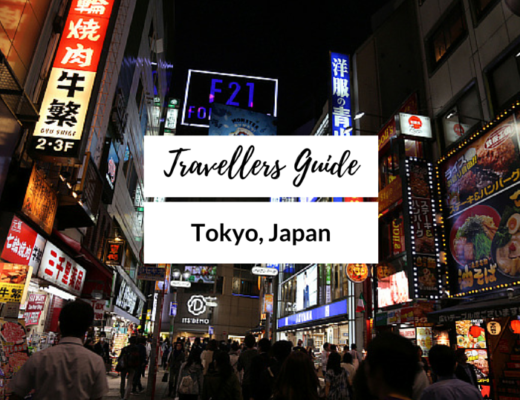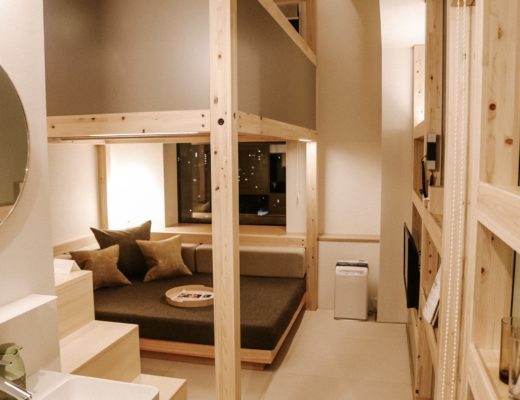Did you know? Fukushima, an area once devastated by earthquake, tsunami and nuclear fallout, has been safe to visit for years. And it has so many wonderful outdoors experiences to explore.
This once hazardous place to visit has a wide variety of experiences for adventurous and cultural travellers.

In 2011, Eastern Fukushima was struck by a tsunami caused by the Tohoku Earthquake. A 9.0-9.1 magnitude earthquake, it was an undersea megathrust earthquake that struck off the coast of Japan. It was the most powerful earthquake to hit Japan in recorded history, and the fourth most powerful ever recorded on Earth. The tsunami caused nuclear accidents, primarily throughout the Fukushima Prefectures Power Plant complex.
Since this catastrophic event, tourists have been reluctant to visit Fukushima, unaware that the no-entry zones surrounding the power plants only make up about three per cent of the area. Wide areas of Fukushima escaped contamination, and are safe for people to visit and explore.
? Tsuruga Castle
 One of Japan’s largest castles, Tsuruga Castle offers a unique experience. Inside, museum exhibits walk you through the history of the castle and everyone who lived there. Constructed 600 years ago, and reconstructed after war and earthquake damage, the Castle is located in Aizu, a central location of importance to the control of Eastern Japan.
One of Japan’s largest castles, Tsuruga Castle offers a unique experience. Inside, museum exhibits walk you through the history of the castle and everyone who lived there. Constructed 600 years ago, and reconstructed after war and earthquake damage, the Castle is located in Aizu, a central location of importance to the control of Eastern Japan.
The local warlord did not reside at the castle, but often came to give orders during times of battle. Tsuruga Castle was one of the last strongholds of Samurai loyal to the shogunate – the last feudal Japanese military government. Today, visitors can climb up to the top of the castle tower, viewing the attractive displays about samurai lifestyle, as well as get the perfect panoramic view from the lookout.
Note: In the Springtime, around 1,000 cherry trees provide an amazing view around the castle.

? Wakeboarding / Lake Inawashiro-ko
Surely not what pops into your head when travelling to Japan, but wakeboarding the scenic Lake Inawashiro-ko is an incredible way to take to nature in Fukushima. Not only wakeboarding, you can also wakeskate or wakesurf with a friendly team and captain, with availability to a bilingual coach. Once you are onboard, the process is explained and demonstrated before giving you multiple opportunities to join in and master the technique. The journey finishes off with a celebration of beer and panoramic views of the lake while everyone else takes their turn.

? Kayaking / Kitashiobara-Mura (views of Mountain Bandai)
Stepping into a world that almost looks prehistoric, with dramatic volcanic mountainous vistas, kayaking the tranquil Lake Kitashiobara-Mura is the perfect way to start your journey through Fukushima. Previously a forest, the lake was created 130 years ago by a volcanic eruption, and is now a popular spot for fishing. At Kitashiobara-Mura Kayak Center you can get all geared up with a lifejacket, and then take a very short trip by minibus down to the lake. From there, it’s a short demonstration of the technique, and then you are free to float around and take in the spectacular views of Mount Bandai.
Note: single and double kayaks are available.

? Onsen / Kunugidaira Hotel
Offering both Traditional Japanese style and European style rooms, this hotel allows guests to immerse themselves in a home away from home. Whether taking a scenic walk or overlooking the Kagamigaike Pond, guests are truly immersed in nature.
The hotel houses a relaxing open air hot spring set amongst the greenery and singing birds. The water of Dake Onsen is acidic, trailing down from 8km away at Mt. Tetsu. Acidic water is particularly rare in in Japan, but to add to the herbal element, the hotel has a variety of 10 different herbs that are blended in to create an even greater warming effect.
? Ouchi-Juku
 A tiny old post town that looks lost in time, Ouchi-Juku is a small village with an unpaved road and thatched roofed buildings. Lined with shops and restaurants, a specialty of the area is char fish roasted sticks and buckwheat (soba) noodles. At Misawaya Soba Restaurant visitors can experience the famous buckwheat noodles served with a large green onion. What’s so odd about that? You may wonder, but the large green onion stick is actually used as an edible chopstick and stirrer. It’s a must-try!
A tiny old post town that looks lost in time, Ouchi-Juku is a small village with an unpaved road and thatched roofed buildings. Lined with shops and restaurants, a specialty of the area is char fish roasted sticks and buckwheat (soba) noodles. At Misawaya Soba Restaurant visitors can experience the famous buckwheat noodles served with a large green onion. What’s so odd about that? You may wonder, but the large green onion stick is actually used as an edible chopstick and stirrer. It’s a must-try!
At the end of the stream-lined streets, you can follow the sound of running water up to the towns Shrine and Temple that also boats a panoramic view of Ouchi-Juku and its surroundings.
? Suehiro Sake Brewery
One of the largest and most famous Sake producers in the Tohoku region,

Suehiro has been a family owned business for eight generations (founded in 1850). Having previously won international and domestic awards, their premium sake is produced using traditional techniques. The “Yamahai” Method utilised slow-fermentation to produce a more full flavour.
The brewery is open to visitors, and runs hourly guided tours. The tour explores the sake-brewing process, the history, and includes a museum and walk-through of the family residence. Dr. Hideyo Noguchi is a world-known bacteriologist recognised for his medical research on syphilis and yellow fever. He was one of the important figures associated with the brewery as he was close friends with the Suehiro’s and many of his letters, pictures and gifts can be viewed throughout the museum. (Dr Hideyo Noguchi is the face on the 1000¥ bill)
? Mount Azuma-kofuji Crater (Jyoudodaira Azumakofuji)
Like its namesake, Mount Azuma-kofuji looks like a miniature replica of Mount Fuji. The active stratovolcano is located in the Azuma Mountains along the border of Fukushima and Yamagata and draws in climbers and hikers throughout the year. The crater can be climbed in 10 minutes from the parking lot, and there is 45 minute walk circling the panoramic views. Notably breathtaking in Autumn and Spring, the site offers spectacular volcanic landscapes and marshlands.
? Iizaka Onsen Area
Like a scene out of Hiroyuki Morit’s dreams, Iizaka truly feels like you’re stepping into the world of The Cat Returns. A small Onsen town, visitors can enjoy the many hot springs, baths, foot baths, and surrounding shrines and temples. The perfect home to relaxation and refreshment, it’s a great location for sightseeing.
? Marusei Fruit Farm
Hidden by what almost appears to be a road-stop, Marusei Fruit Farm is a hidden gem waiting to be discovered by passers-by. A sight-seeing farm, if you’ve ever heard of it, is the perfect place to pick your own fresh produce. Depending on the season there is a variety of fruits offered including, cherries, peaches, pears, apples and grapes. Guests are given an allocated time of 30 minutes to pick and eat as much as they like.
While there, it’s definitely worth visiting the Farmhouse Cafe on sight for one of the specialty parfaits and at the shop you can take home other fresh produce, and other fresh souvenirs including flavoured juices, ice cream, and candies.
Note: It’s recommended to put your name down for a table at the cafe before you begin fruit picking as it can get busy depending on the time.

? Skypia Adatara Active Park
The recently opened (April 2018) Active Park in Fukushima is the first national indoor complex facility, offering various thrilling experiences. Gear up and master skateboarding, or change into some climbing shoes and give free-climbing a go. Depending on your comfort levels you can either try the free-climbing wall, or pop on a harness and climb up the rock-climbing walls with automatic belaying (there is no time limit). As well as offering coin operated showers and an activewear shop, visitors can also try out the various slack lines set up to master their balance and tricks.
For an inside look of this trip, see my Japanese Highlights here




No Comments